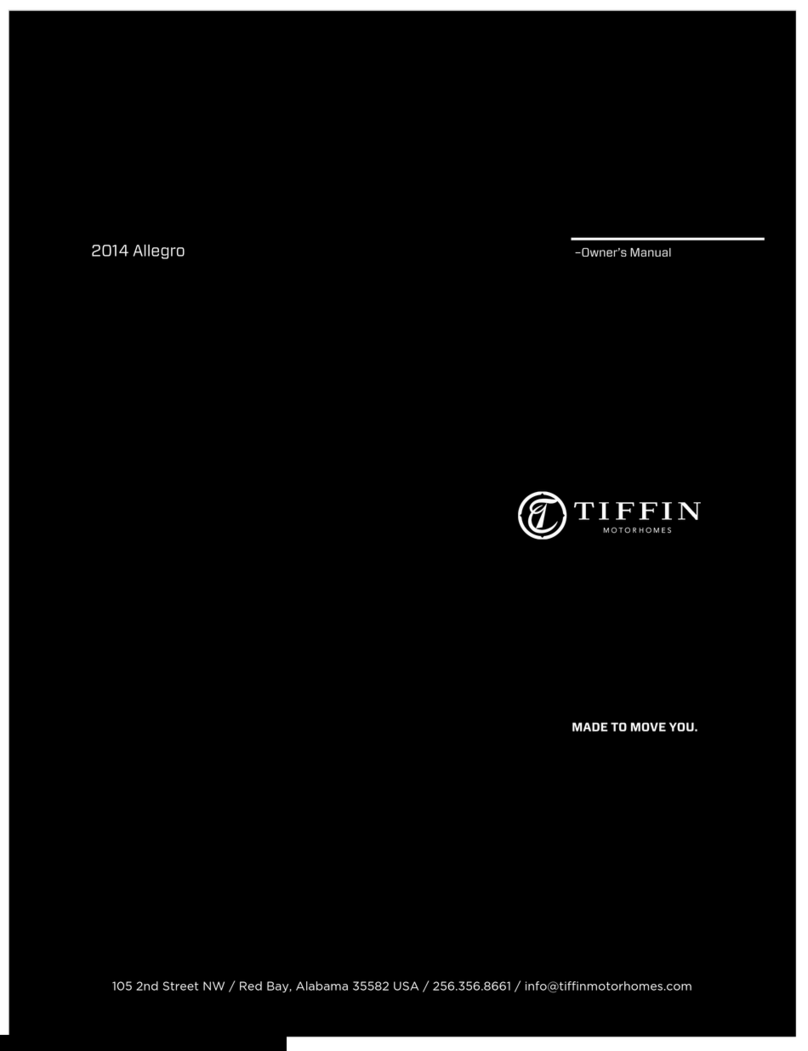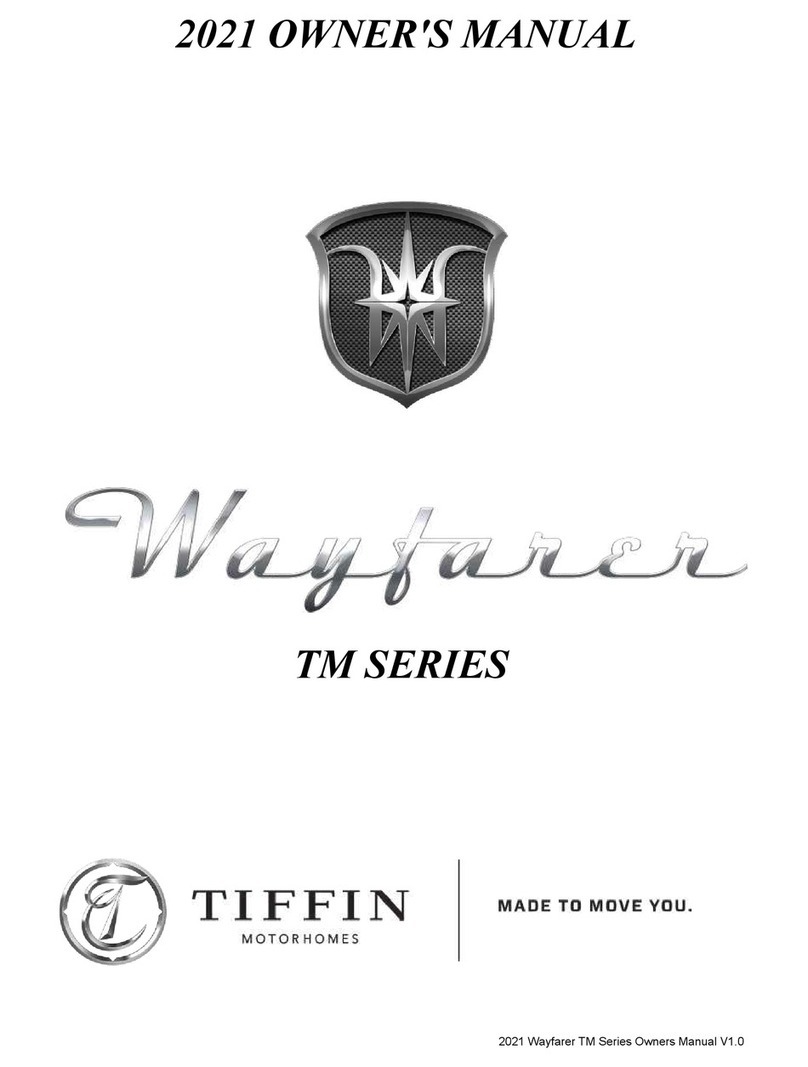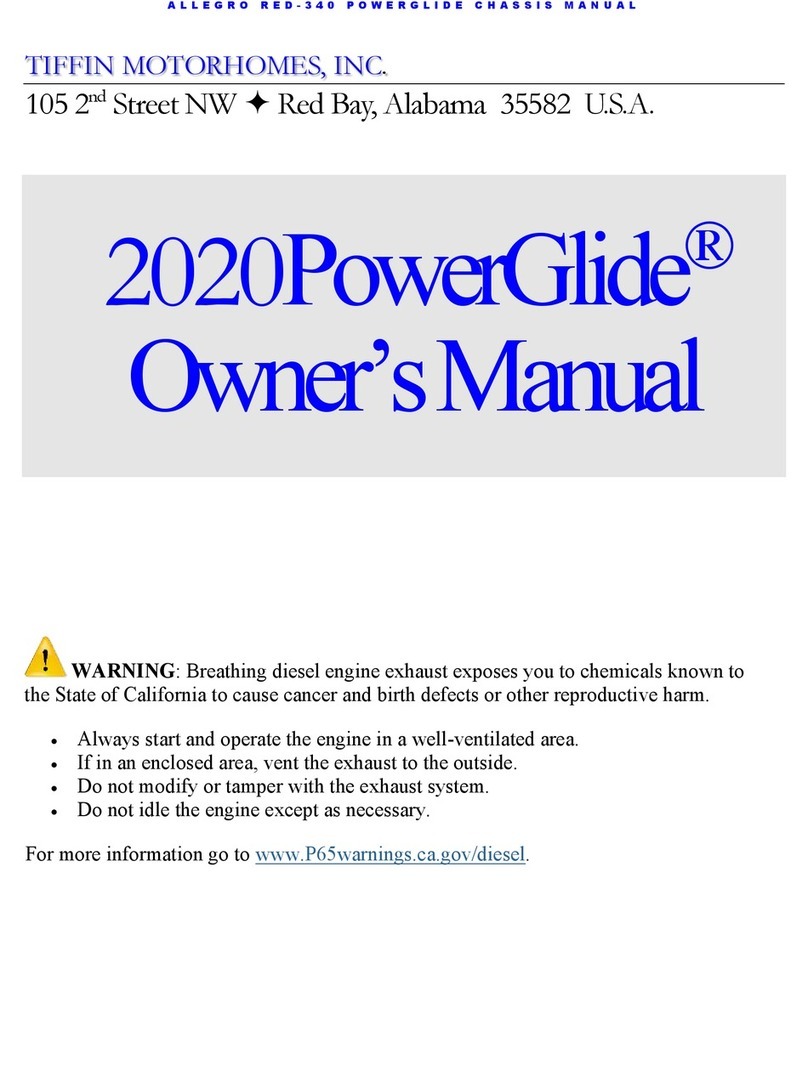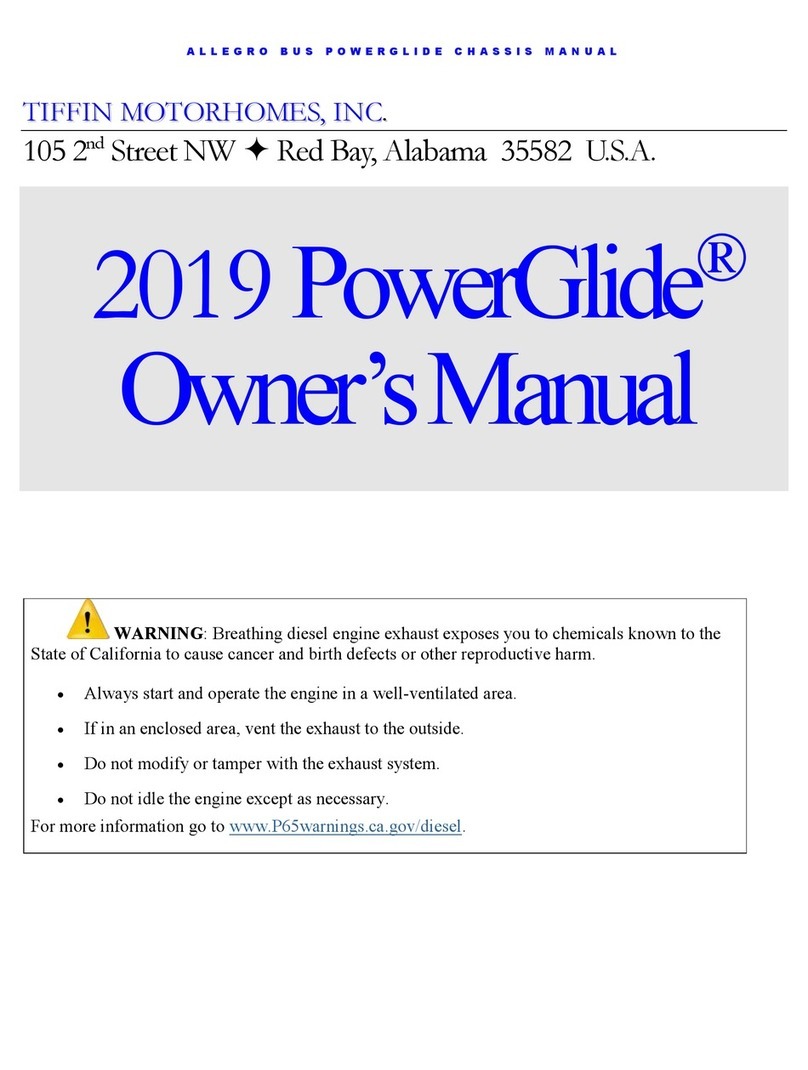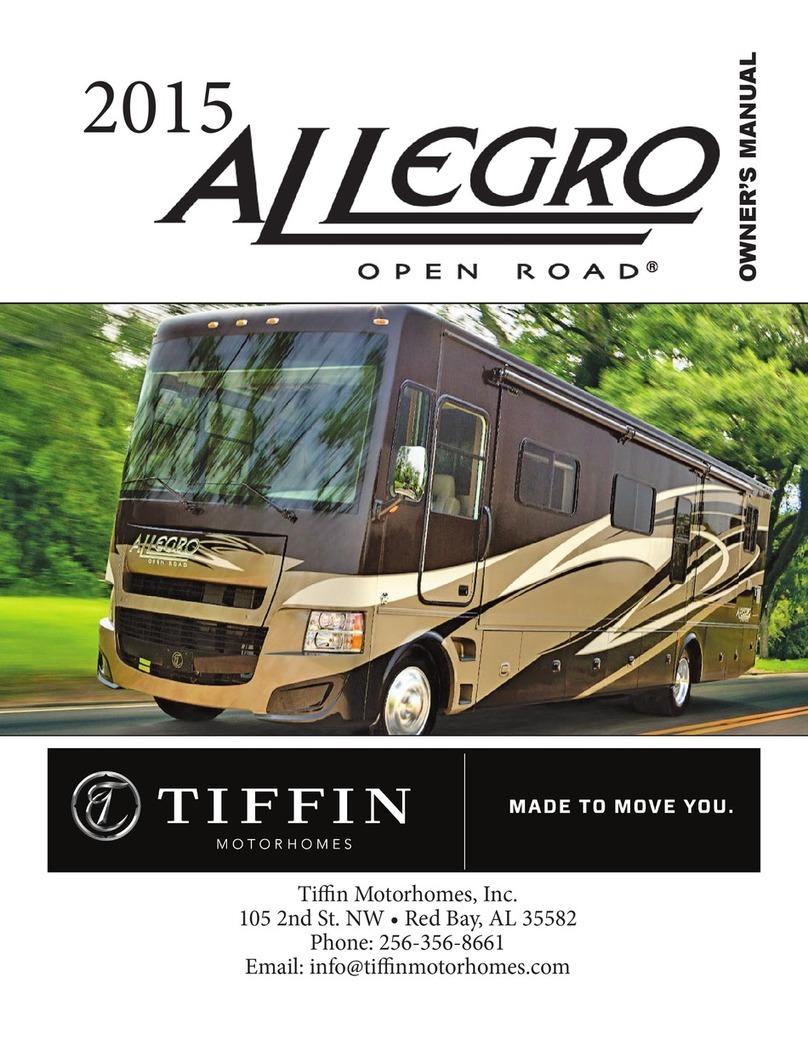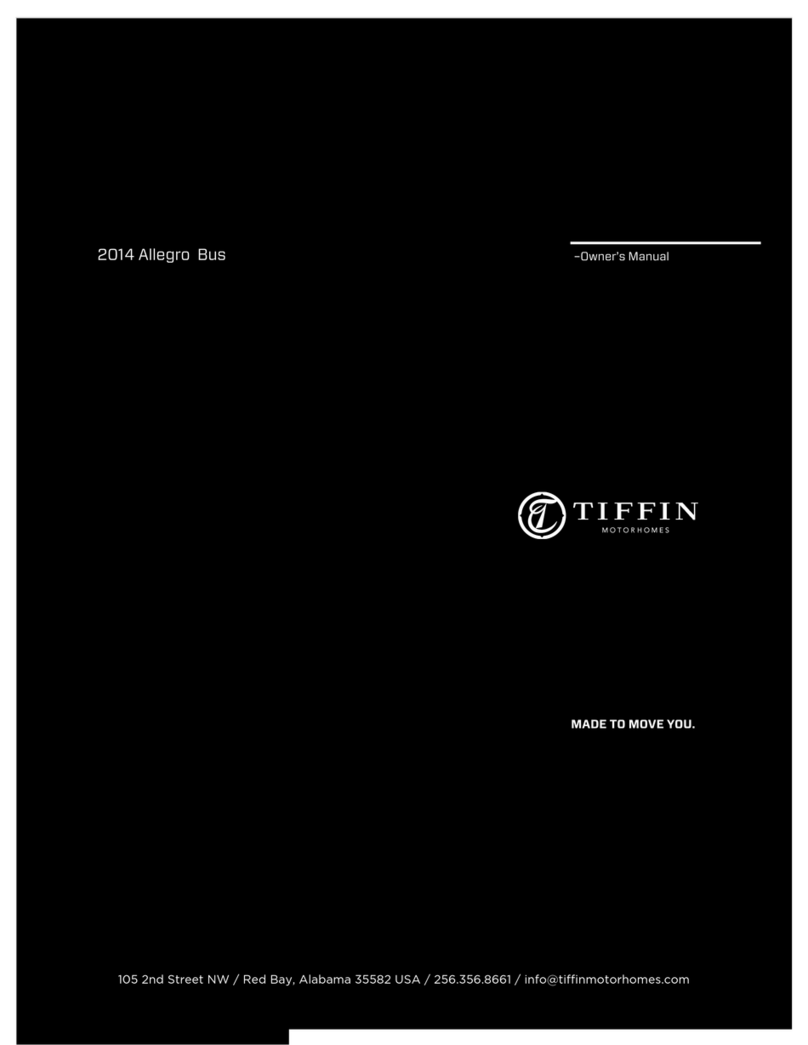
GENERAL INFORMATION
1-2
Tiffin Motorhomes: “Wherever you go, we go”
Delivery
Throughout the entire manufacturing process your Tiffin motor home has been regularly inspected by our
qualified personnel to assure you of the finest product of the highest quality, without exception. However,
the final inspection at our factory is not to be the last one. The pre-delivery inspection and system check that
your dealer performs are the final inspections done to your particular motor home prior to your actually
receiving your new Allegro Bus motor home. Your dealer is also available to assist you in understanding the
warranties and completing the necessary forms to activate the warranties for the various appliances and
accessories installed in your motor home.
Dealer Responsibilities
1. A pre-delivery inspection and systems check is performed to assure a thorough inspection of the
motor home and to assure the proper operation of all factory-installed components.
2. A customer walk-through is performed to familiarize the new customer with the motor home, its
systems and components, and their proper and safe operation.
3. Delivery of the Owner’s Information Package which contains warranty cards and registrations for
the vehicle and all factory-installed components from other vendors and suppliers to Tiffin
Motorhomes. The detailed operation instructions and maintenance instructions on these components
are also included in this package.
4. Assisting the customer in completing the registration forms to avoid loss of warranty coverage. The
dealer should review the limited-warranty provisions with the customer to stress the importance of
completing the warranty cards and registration forms for the components in the motor home to enable
the manufacturers to receive them within the prescribed time limits.
5. Providing the customer with information regarding warranty and non-warranty work on the
vehicle and its separately warranted components.
Customer Responsibilities
The customer is responsible for regular and proper maintenance of the motor home. Properly maintaining
your motor home will prevent conditions arising from neglect that are not covered by your Tiffin Motorhomes
limited warranty. The maintenance guidelines in this manual and any other, applicable manual(s) should be
followed. It is your responsibility and obligation to return the vehicle to an authorized dealer for repairs and
service.
To assist you in avoiding problems with your motor home, it is recommended that you do the following:

